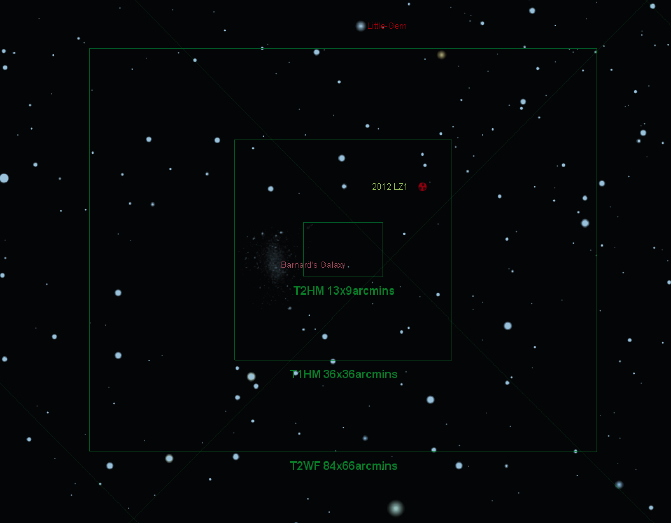
UPDATE: Asteroid 2012 LZ1 has passed Earth by. See the full story and photos here: City Block-Size Asteroid 2012 LZ1 Zips by Earth as Scientists Watch
This story was updated at 3:30 p.m. EDT on June 14.
An asteroid the size of a city block is set to fly by Earth today (June 14), and you may be able to watch it happen live.
The near-Earth asteroid 2012 LZ1, which astronomers think is about 1,650 feet (500 meters) wide, will come within 14 lunar distances of Earth Thursday evening. While there's no danger of an impact on this pass, the huge space rock may come close enough to be caught on camera.
That's what the team running the Slooh Space Camera thinks, anyway. The online skywatching service will train a telescope on the Canary Islands on 2012 LZ1 and stream the footage live, beginning at 8:00 p.m. EDT today (0000 GMT Friday) — the time of closest approach.
Astronomer Rob McNaught, 2012 LZ1's discoverer, will participate in the webcast, as will Astronomy magazine columnist Bob Berman. You can watch the asteroid flyby on Slooh's website, found here: http://events.slooh.com/
During today's close approach, the asteroid will look like a 13th-magnitude "star" in the sky, Slooh officials said. That's pretty faint as far as celestial objects go, too dim to be picked up by the naked eye or a standard pair of binoculars. (In astronomy, lower magnitudes signify relatively brighter objects. Venus' magnitude is around -5, for example, while the full moon's is about -13.)
Get the Space.com Newsletter
Breaking space news, the latest updates on rocket launches, skywatching events and more!
2012 LZ1 just popped onto astronomers' radar this week. It was spotted on the night of June 10-11 by McNaught and his colleagues, who were peering through the Uppsala Schmidt telescope at Siding Spring Observatory in Australia.

Researchers estimate that the space rock is between 1,000 and 2,300 feet wide (300-700 m). This evening, it will come within about 3.35 million miles (5.4 million kilometers) of our planet, or roughly 14 times the distance between Earth and the moon.
Because of its size and proximity to Earth, 2012 LZ1 qualifies as a potentially hazardous asteroid. Near-Earth asteroids generally have to be at least 500 feet (150 m) wide and come within 4.65 million miles (7.5 million km) of our planet to be classified as potentially hazardous.
2012 LZ1 is roughly the same size as asteroid 2005 YU55, which made a much-anticipated flyby of Earth last November. But 2005 YU55 gave our planet a much closer shave, coming within 202,000 miles (325,000 km) of us on the evening of Nov. 8. A space rock as big as 2005 YU55 hadn't come so close to Earth since 1976, researchers said.
Astronomers have identified roughly 9,000 near-Earth asteroids, but they think many more are out there.
"We will most certainly find more as NASA, along with other space agencies and astronomers, are on a constant look-out," Berman said in a statement.
Follow SPACE.com senior writer Mike Wall on Twitter @michaeldwall or SPACE.com @Spacedotcom. We're also on Facebook and Google+.
Join our Space Forums to keep talking space on the latest missions, night sky and more! And if you have a news tip, correction or comment, let us know at: community@space.com.

Michael Wall is a Senior Space Writer with Space.com and joined the team in 2010. He primarily covers exoplanets, spaceflight and military space, but has been known to dabble in the space art beat. His book about the search for alien life, "Out There," was published on Nov. 13, 2018. Before becoming a science writer, Michael worked as a herpetologist and wildlife biologist. He has a Ph.D. in evolutionary biology from the University of Sydney, Australia, a bachelor's degree from the University of Arizona, and a graduate certificate in science writing from the University of California, Santa Cruz. To find out what his latest project is, you can follow Michael on Twitter.









